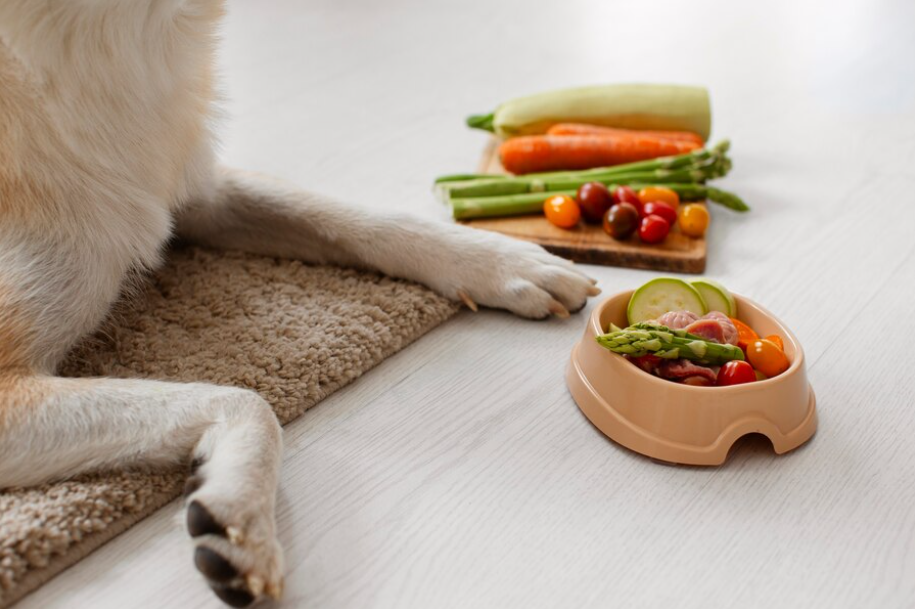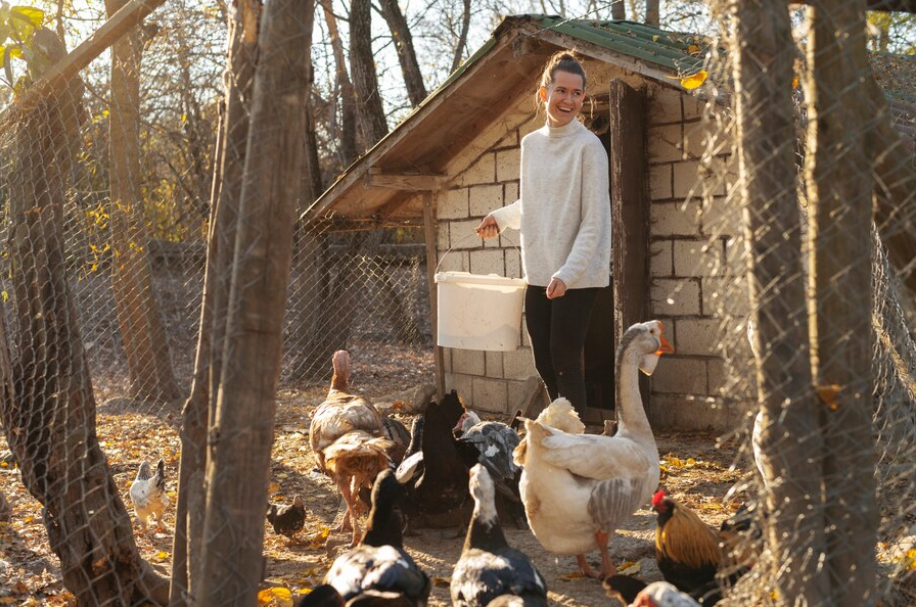Eco-friendly animal fostering is a growing movement that combines compassion for animals with a commitment to environmental sustainability. By making conscious choices in everything from pet supplies to waste management, foster carers can significantly reduce their carbon pawprint while providing a loving home for animals in need.
This article will explore the concept of eco-friendly Animal Fostering Near Me, providing practical tips and guidance for those interested in making a positive impact on both animals and the planet. From finding eco-friendly foster programs to creating sustainable home environments, we will cover essential aspects of this rewarding endeavor.

Understanding Eco-Friendly Animal Fostering Near Me
What is Eco-Friendly Animal Fostering?
Eco-friendly animal fostering is a commitment to caring for animals in a way that minimizes environmental impact. It involves making conscious choices about everything from the products used to the practices employed, with the goal of creating a sustainable and healthy environment for both the foster animal and the planet.
Benefits of Eco-Friendly Fostering Near Me
Beyond the obvious benefit of helping animals in need, eco-friendly fostering contributes to a healthier planet. By reducing waste, conserving resources, and promoting sustainable practices, foster carers can make a significant difference. Additionally, it sets a positive example for the community and can inspire others to adopt eco-friendly habits.
Common Misconceptions About Eco-Friendly Fostering
Many people believe that eco-friendly living is expensive or inconvenient. However, eco-friendly fostering can be affordable and practical. It doesn’t require drastic lifestyle changes but rather small, conscious choices. On the contrary, eco-friendly practices often enhance the well-being of foster animals by providing them with a healthier environment.

Eco-Friendly Foster Programs in the USA
There’s a growing number of animal shelters and rescue organizations across the United States that are incorporating eco-friendly practices into their foster programs. These programs often prioritize sustainable living, reducing their carbon footprint, and promoting animal welfare through environmentally conscious methods.
How to Find Eco-Friendly Foster Organizations
Locating eco-friendly foster organizations might require some research. Start by searching online for terms like “eco-friendly animal rescue,” “sustainable animal fostering,” or “green animal shelters.” Contact local shelters and inquire about their sustainability initiatives. Additionally, consider reaching out to environmental organizations or vegan/vegetarian groups for recommendations.


Tips for Finding a Foster Match
When searching for a foster match, consider your lifestyle, available space, and experience level. Be clear about your commitment to eco-friendly practices and inquire about the organization’s sustainability goals. Building a strong relationship with the foster organization is essential for a successful placement.
Creating an Eco-Friendly Foster Home Environment
Sustainable Supplies for Your Foster Pet
Choosing eco-friendly products for your foster pet is crucial. Opt for food bowls and toys made from recycled materials, organic bedding, and sustainable pet food. Avoid single-use plastic items and look for products with minimal packaging.
Eco-Friendly Cleaning and Hygiene Practices
Maintaining a clean environment for your foster pet is essential, but it can also be eco-friendly. Use natural cleaning products, opt for reusable cleaning cloths, and consider air-drying pet items whenever possible. Proper hygiene practices help prevent the spread of diseases and protect the environment.
Green Enrichment Activities for Foster Animals
Providing mental and physical stimulation for your foster pet is vital for their well-being. Incorporate eco-friendly enrichment activities like playing with recycled toys, exploring outdoor spaces safely, and engaging in interactive games. This not only improves their quality of life but also reduces their reliance on plastic or manufactured toys.
Reducing Your Foster Pet’s Carbon Pawprint
While your foster pet’s carbon footprint might seem small, collective efforts make a difference. Consider carpooling for vet visits, reducing energy consumption in their living area, and adopting sustainable transportation methods when possible. These small steps contribute to a greener planet.

Eco-Friendly Foster Care Best Practices
Healthy and Sustainable Diets for Foster Animals
Feeding your foster pet a healthy and sustainable diet is essential for their well-being and the environment. Opt for high-quality, minimally processed food made with organic ingredients. Consider plant-based options or those with reduced meat content to minimize the environmental impact of their diet.
Responsible Pet Waste Management
Properly managing pet waste is crucial for environmental protection. Pick up after your foster pet promptly, and dispose of waste in designated areas.
Energy Efficiency in Foster Homes
Reducing energy consumption in your foster home benefits the environment and can lower utility bills. Use energy-efficient appliances, install LED lightbulbs, and adjust thermostats to optimize energy usage.
Promoting Adoption and Spay/Neuter
One of the most impactful ways to contribute to animal welfare and reduce the pet population is by promoting adoption and spay/neuter programs. Encourage potential adopters to visit your foster pet and educate them about the benefits of responsible pet ownership.
Overcoming Challenges in Eco-Friendly Fostering
Addressing Common Eco-Friendly Foster Care Concerns
While eco-friendly fostering is rewarding, it can present challenges. Common concerns include finding sustainable products, managing pet waste effectively, and balancing environmental goals with the animal’s needs. Open communication with your foster organization can help address these issues.
Balancing Environmental Impact and Animal Welfare
It’s essential to prioritize the well-being of your foster pet while striving for sustainability. Sometimes, finding eco-friendly alternatives might involve compromises. The key is to find a balance that ensures both the animal’s health and environmental considerations are met.
Building a Supportive Eco-Friendly Foster Community
Engaging with a community of eco-friendly foster carers can give you useful support and valuable resources.Sharing experiences, tips, and recommendations can create a strong community dedicated to sustainable animal care. Online forums, social media groups, and local meetups can facilitate these connections.




Spreading the Word About Eco-Friendly Fostering
Educating the Public About Eco-Friendly Fostering
Raising awareness about eco-friendly fostering is essential for driving positive change. Share information about the benefits of sustainable practices in animal care through social media, workshops, and community events. Highlight the impact of small actions on a larger scale.
Partnering with Local Businesses and Organizations
Collaborating with local businesses and organizations can amplify your message. Partner with pet supply stores, veterinarians, and environmental groups to promote eco-friendly initiatives. Joint events and campaigns can reach a wider audience and generate support.
Advocating for Eco-Friendly Policies in Animal Welfare
Advocacy plays a vital role in creating a sustainable future for animals. Support policies that promote eco-friendly practices in shelters, rescues, and foster care programs. Engage with local policymakers to advocate for legislation that reduces the environmental impact of animal care.
Resources for Eco-Friendly Animal Fostering
Eco-Friendly Pet Supply Retailers
Finding eco-conscious options for your foster pet can be challenging. Research and support retailers that prioritize sustainability. Seek out retailers that provide organic pet food, recycled toys, and products crafted from sustainable materials.

Online Communities and Forums
Connect with like-minded individuals through online platforms. Join eco-friendly foster care groups, share experiences, and learn from others. These communities offer valuable support, advice, and resources.
Government and Non-Profit Organizations
Explore government initiatives and non-profit organizations dedicated to animal welfare and environmental protection. Many offer resources, grants, or programs to support eco-friendly fostering. Stay informed about relevant policies and opportunities to make a greater impact.
Conclusion
Becoming an eco-friendly foster carer is a rewarding journey that benefits both animals and the environment. By incorporating sustainable practices into your daily routine, you can create a healthier and happier home for your foster pets while minimizing your carbon footprint.
Remember, every small step counts. Whether it’s choosing eco-friendly products, reducing waste, or educating others about the importance of sustainable animal care, your actions contribute to a greener and more compassionate world. By fostering animals in an environmentally conscious manner, you’re not only providing temporary shelter but also inspiring others to embrace a more sustainable lifestyle.
FAQs on Eco-Friendly Animal Fostering

What is eco-friendly animal fostering?
Eco-friendly animal fostering involves caring for animals in a way that minimises environmental impact. This includes using sustainable products, reducing waste, and adopting eco-conscious practices.
What are the benefits of eco-friendly fostering?
Benefits include reducing your carbon footprint, promoting animal welfare through a healthier environment, and inspiring others to adopt sustainable practices.
Can I still provide the best care for my foster pet while being eco-friendly?
Absolutely! Eco-friendly fostering doesn’t compromise animal welfare. It involves making conscious choices that benefit both the pet and the planet.
How can I find eco-friendly foster programs near me?
Research online using keywords like “eco-friendly animal rescue,” “sustainable animal fostering,” or “green animal shelters.” Contact local shelters and inquire about their sustainability initiatives.
What should I look for in an eco-friendly foster organization?
Look for organizations that prioritize sustainable practices, use eco-friendly products, and have a clear commitment to reducing their environmental impact.
What are some eco-friendly products I can use for my foster pet?
Consider using organic pet food, recycled toys, and bedding made from sustainable materials. Avoid single-use plastics and excessive packaging.
How can I reduce my foster pet’s carbon pawprint?
Reduce energy consumption in their living area, carpool for vet visits, and choose sustainable transportation options when possible.
How can I balance environmental concerns with my foster pet’s needs?
Prioritize your foster pet’s well-being while making conscious choices to minimize environmental impact. Sometimes, finding eco-friendly alternatives might involve compromises.
How can I get involved in advocating for eco-friendly animal welfare policies?
Educate yourself about relevant policies, contact local policymakers, and support organizations working towards eco-friendly animal welfare initiatives.
Extension
1. Search for Local Animal Shelters and Rescues
- Look for animal shelters, rescue organizations, or fostering programs in your area that promote eco-friendly practices.
- Example Link: Petfinder’s Shelter and Rescue Directory – Search for local shelters that might be involved in eco-friendly practices.
2. Check Environmental Organizations with Animal Welfare Programs
- Many environmental organizations also have programs related to animal welfare.
- Example Link: The Humane Society of the United States – They often have local chapters or initiatives that might include eco-friendly practices.
3. Look for Local Community Groups and Forums
- Local community boards or forums often have information about animal fostering and may include eco-friendly options.
- Example Link: Nextdoor – You can search for local posts or groups about eco-friendly animal fostering.
4. Research Eco-Friendly Pet Products and Services
- Companies specializing in eco-friendly pet products or services might also provide information or resources on fostering.
- Example Link: Eco-Friendly Pet Products on Petco – They might have resources or partners involved in fostering.
5. Check Out National and Local Non-Profit Organizations
- Non-profits often have resources or links related to fostering and eco-friendly practices.
- Example Link: Best Friends Animal Society – They have resources and might list eco-friendly fostering options.
6. Find Articles and Blogs on Related Topics
- Look for articles or blog posts that discuss eco-friendly animal fostering or related subjects. These can often be linked to your content.
- Example Link: TreeHugger’s Pet Care Section – They might have articles on eco-friendly pet care practices




